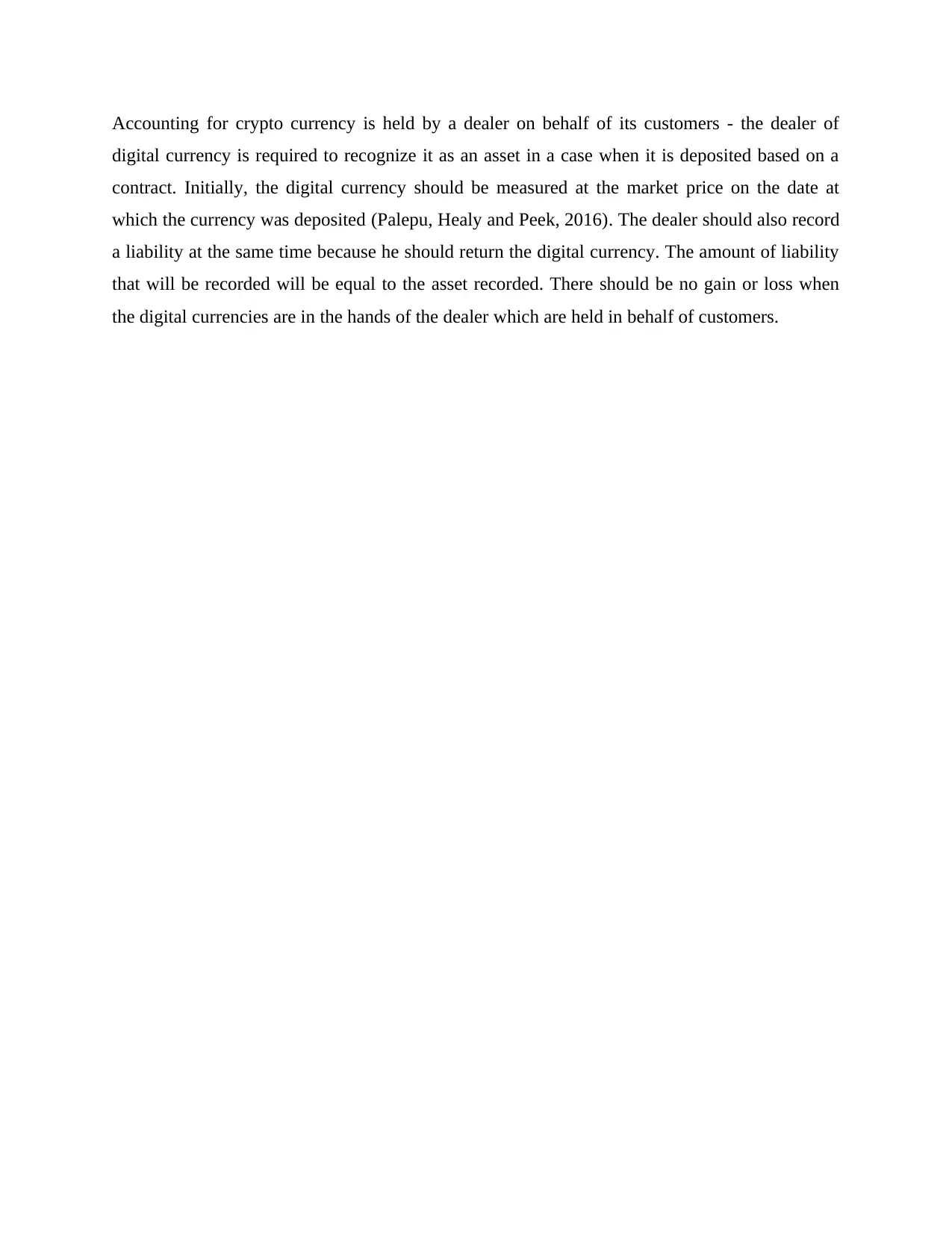Accounting for Digital Currency: Contemporary Issues and Solutions
VerifiedAdded on 2022/11/01
|4
|709
|138
Report
AI Summary
This report examines the accounting treatment of digital currencies, specifically focusing on cryptocurrencies like Bitcoin. It addresses the challenges of classifying digital currencies within accounting frameworks, considering whether they should be treated as cash equivalents, financial instruments, or intangible assets. The report references IAS 7 and IAS 32 to explain why digital currencies do not fit the definitions of cash or financial instruments. It then aligns digital currencies with the definition of intangible assets under IAS 38. The report further outlines two distinct accounting methods depending on whether the currency is held by a company on its own behalf or by a dealer on behalf of customers. For company-held currencies, it discusses valuation at market price or at the lower of cost or disposable value. For dealer-held currencies, it explains the recognition of assets and liabilities with no gain or loss recorded. The report provides a comprehensive overview of digital currency accounting, supported by relevant references.
1 out of 4










![[object Object]](/_next/static/media/star-bottom.7253800d.svg)